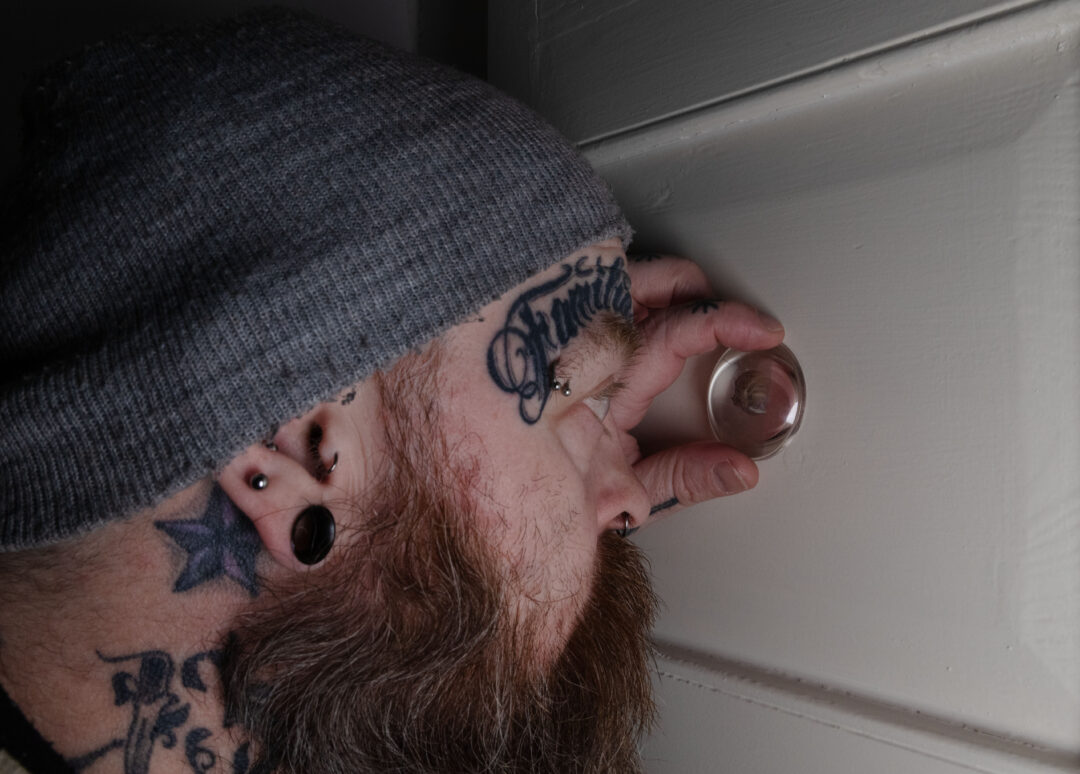Kerry Writers’ Museum has constructed a camera obscura so that people can experience what it is like to be inside a camera. Curators drilled a hole in a shutter on a window overlooking the square in Listowel and an image of St. John’s Theatre and Arts Centre is projected through the hole on to the wall opposite, upside down and back to front.
“We are the only museum in Ireland to have installed a camera obscura in the classic sense of drilling a small hole in a wall and turning a darkened room into a camera” says director Cara Trant. Another camera obscura will open in the north later this month, but it uses a roof mounted system manufactured by the Astronomy Centre in Lancashire. The Listowel camera, on the other hand, takes the viewer back to the origins of photography over 400 years ago.
Ciarán Walsh came up with the idea while designing an exhibition built around the Bolex 16mm camera used by local film makers John Lynch and Michael Mulcahy. “We wanted to celebrate analogue cinematography, so we put people inside a room sized camera” he says. “It’s very interactive. You stand in the dark, let your eyes adjust and the image appears. Put your finger over the hole in the shutter and it disappears. It’s immersive and mesmerising”.
The project has become the springboard for much bigger exploration of the link between storytelling and filmmaking in Listowel and beyond. The Heritage Council supported the project with a grant of €40,000 under the Heritage Support Fund and the museum hopes to raise awareness of the importance of community film making, amateur film and home movies as important heritage assets that can easily disappear.
The camera obscura is open to the public and all you need to do is turn up at Kerry Writers’ Museum and ask them to turn the lights out.
Thumbnails/ Captions / Descriptions

Curator Ciarán Walsh spends 20 seconds inside the camera obscura in Kerry Writers’ Museum (photo Kerry Writers’ Museum).
Description: Walsh used his mobile phone as a light source that doesn’t overwhelm the light from outside. The image projected features St John’s Theatre on the Square in Listowel. The clock (upside down and back to front) shows the time.
 Shane Batten checks the aperture of the camera obscura in Kerry Writers Museum, Listowel (photo Kerry Writers’ Museum).
Shane Batten checks the aperture of the camera obscura in Kerry Writers Museum, Listowel (photo Kerry Writers’ Museum).
Description: The aperture is a 10mm hole drilled in a shutter on a window overlooking the square in Listowel. Batten holds a lens salvaged from a slide projector over the aperture to see what affect if any it has on the projection (the mage remained in focus for a couple of inches and was much smaller, so we discarded the lens).
 Shane Batten checks the aperture of the camera obscura in Kerry Writers Museum, Listowel (photo Kerry Writers’ Museum).
Shane Batten checks the aperture of the camera obscura in Kerry Writers Museum, Listowel (photo Kerry Writers’ Museum).
Description: The aperture is a 10mm hole drilled in a shutter on a window overlooking the square in Listowel. Batten holds a lens salvaged from a slide projector over the aperture to see what affect if any it has on the projection (the mage remained in focus for a couple of inches and was much smaller, so we discarded the lens).

Shane Batten spends 20 seconds inside the camera obscura (photo Ciarán Walsh, Kerry Writers’ Museum).
Description: Batten used his mobile phone as a light source that doesn’t overwhelm the light form outside. The image projected features St John’s Theatre on the Square in Listowel. The clock (upside down and back to front) shows the time.
Historical Note
The term camera obscura (dark room) was first used in 1604 to describe a completely darkened room in which a small hole is made in one wall so that the scene outside is projected on to a screen on the wall opposite. The rays of light bend around the hole and the scene appears upside-down and mirrored, although colour and perspective are not affected. The smaller the hole, the sharper the image, but it may take several minutes for your eyes to adjust to the darkness enough to see the image.
A miniature of this room became known as a “camera” and experiments in fixing the projected image led to the invention of photography in 1826. Nicéphore Niépce experimented with material that hardened on exposure to light and he produced his first picture after an “exposure” of eight hours. it takes twenty seconds max to get a properly exposed photograph inside the camera obscura in Listowel.

an illustration of a camera obscura in Athanasius Kircher’s, Ars magna lucis et umbrae (The Magnetic Art of Light and Shadow), 1646 (creative Commons)

